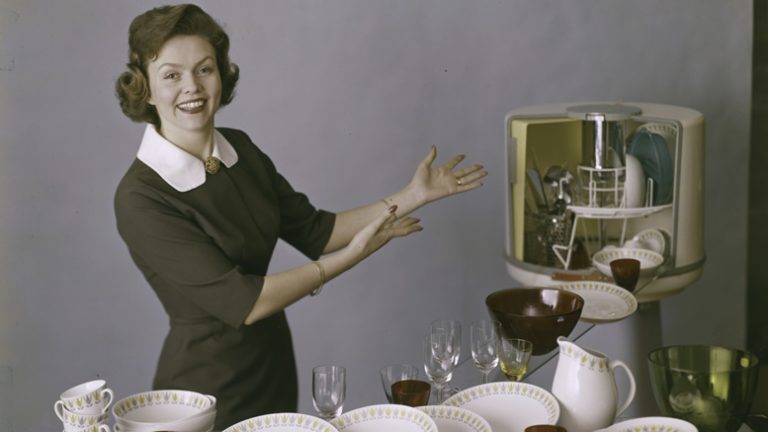Dishwasher Safe and Other Tableware Symbols
Tableware symbols serve as crucial guides for consumers, providing essential information about the proper care and use of various kitchen items. These symbols, often inconspicuously etched or printed on the bottom of dishes, glassware, and utensils, offer valuable insights into how to maintain and preserve these everyday essentials. Among these symbols, the dishwasher-safe icon stands out as particularly important in our modern, convenience-driven world. This article will delve into the intricacies of the dishwasher-safe symbol, explore other common tableware symbols, and provide tips for understanding and utilizing this visual language to extend the life of your kitchenware.
The dishwasher-safe symbol, typically depicted as a stylized plate with three wavy lines above it, indicates that an item can withstand the rigors of automatic dishwashing. This seemingly simple icon carries significant weight in our daily lives, as it determines which items can be safely cleaned in a dishwasher without risk of damage. However, the world of tableware symbols extends far beyond this single icon. From microwave-safe indicators to oven-safe emblems, these symbols form a comprehensive system that guides users in the proper handling and care of their kitchen items.
The Dishwasher Safe Symbol: A Closer Look

The dishwasher-safe symbol represents a plate’s ability to endure the harsh conditions inside a dishwasher. This icon typically features a square or rectangular shape containing a simplified plate or dish with three wavy lines above it, symbolizing water or steam. The presence of this symbol on tableware signifies that the item can withstand high temperatures, strong detergents, and the mechanical action of a dishwasher without sustaining damage or degradation.
Several factors influence a product’s dishwasher-safe rating. The material composition plays a crucial role, as certain substances are more resistant to heat and chemical exposure than others. Construction methods, such as the application of glazes or protective coatings, also contribute to an item’s dishwasher compatibility. Common dishwasher-safe materials include:
1. Porcelain
2. Ceramic
3. Glass
4. Stainless steel
5. Some plastics (specifically labeled as dishwasher-safe)
It’s important to note that even within these categories, variations exist. For example, fine china, despite being a type of porcelain, may not be dishwasher-safe due to its delicate nature and potential for damage from high temperatures and harsh detergents.
Other Tableware Symbols: A Visual Language

While the dishwasher-safe symbol is arguably the most recognized, it is just one part of a broader symbolic language used on tableware. Understanding these additional symbols can help users properly care for and utilize their kitchen items, ensuring longevity and optimal performance.
The microwave-safe symbol, often depicted as a stylized microwave oven, indicates that an item can be safely used in a microwave without risk of damage or harmful reactions. This symbol is particularly important for plastic containers, as some plastics can melt or release harmful chemicals when exposed to microwave radiation.
Oven-safe symbols typically feature a square or rectangular icon containing an oven shape or a temperature range. This symbol signifies that the item can withstand high oven temperatures without warping, melting, or releasing harmful substances. The specific temperature range may be indicated numerically or through a series of graduated lines.
Freezing-safe symbols, often represented by a snowflake icon, indicate that an item can safely store food in freezing temperatures without cracking or degrading. This symbol is particularly relevant for food storage containers and certain types of glassware.
The hand-wash only symbol, usually depicted as a hand washing a plate or a crossed-out dishwasher symbol, warns users that the item should not be placed in a dishwasher. This symbol is often found on delicate items, wooden utensils, or products with special coatings that may be damaged by the harsh conditions in a dishwasher.
Material-specific symbols provide information about the composition of the item. For example, a tree icon might indicate that the product is made from wood or bamboo, while a recycling symbol with a number inside denotes the type of plastic used in the item’s construction.
| Symbol | Meaning | Common Materials |
|---|---|---|
| Plate with wavy lines | Dishwasher-safe | Porcelain, ceramic, glass, stainless steel |
| Microwave oven | Microwave-safe | Certain plastics, glass, ceramic |
| Oven with temperature | Oven-safe | Metal, cast iron, some ceramics |
| Snowflake | Freezing-safe | Certain plastics, glass |
| Hand washing plate | Hand-wash only | Wood, fine china, non-stick cookware |
Tips for Understanding and Utilizing Tableware Symbols

To maximize the lifespan and performance of your tableware, it’s crucial to pay attention to these symbols and follow their guidance. Here are some essential tips for understanding and utilizing tableware symbols effectively:
- 1. Always check for symbols before placing items in the dishwasher. The presence of a dishwasher-safe symbol provides assurance that the item can withstand automatic washing.
- 2. Consult manufacturer instructions for specific cleaning recommendations. Some items may require special care or have limitations on dishwasher use, such as top-rack only placement.
- 3. Be aware that some dishwasher-safe items might benefit from adjustments in dishwasher settings. For example, delicate glassware may fare better with a gentle cycle or lower water temperature.
- 4. Remember that the absence of a dishwasher-safe symbol doesn’t necessarily mean an item can’t be washed in a dishwasher. However, it’s best to err on the side of caution and hand-wash items without clear dishwasher-safe labeling.
- 5. Pay attention to material-specific symbols, as they can provide valuable information about an item’s care requirements. For instance, wooden items often require special care to prevent warping or cracking.
- 6. When in doubt about a symbol’s meaning, consult the product’s packaging or the manufacturer’s website for clarification.
- 7. Consider creating a quick reference guide for your household, listing common tableware symbols and their meanings. This can be especially helpful for family members or guests who may be less familiar with these icons.
Understanding and adhering to tableware symbols can significantly extend the life of your kitchen items. By following the guidance provided by these symbols, you can avoid common pitfalls such as warped plastic containers, etched glassware, or damaged non-stick coatings. Moreover, proper care based on these symbols can help maintain the aesthetic appeal of your tableware, ensuring that your favorite dishes and glasses remain in pristine condition for years to come.
In conclusion
The world of tableware symbols, with the dishwasher-safe icon at its forefront, provides a valuable resource for consumers seeking to properly care for their kitchen items. By familiarizing yourself with these symbols and following their guidance, you can ensure the longevity and optimal performance of your tableware. We encourage you to apply this knowledge in your daily life and to explore further resources on tableware care to make the most of your kitchen investments. Additionally, if you’re looking for a reliable and high-performing appliance to complement your tableware, researching the best KitchenAid dishwasher models can help you find an option that ensures both effective cleaning and care for your kitchen items.

Michael Thompson is a highly skilled appliance technician specializing in KitchenAid dishwashers. With many years of experience, Michael is renowned for his expertise in handling various models of KitchenAid dishwashers, ensuring optimal performance and longevity. His dedication to customer satisfaction and in-depth knowledge of appliance technology make him a trusted figure in his community. Michael’s commitment to quality service has earned him a reputation as one of the best in his field.







Great guide on tableware symbols! The detailed breakdown of symbols such as ‘microwave safe’ and ‘not oven safe’ is very informative. I found the advice on how to properly care for different types of tableware especially useful. This article has been very helpful for maintaining my dishes.
Can you explain the difference between the dishwasher-safe symbol and the microwave-safe symbol? How can I ensure that my tableware is suitable for both?
Hi Jemily,
Great question! The dishwasher-safe symbol and the microwave-safe symbol are distinct and serve different purposes.
Dishwasher-Safe Symbol: This symbol typically looks like a square with a plate and glasses under water droplets. It indicates that the item can withstand the heat and water pressure of a dishwasher without being damaged.
Microwave-Safe Symbol: This symbol usually resembles a microwave or wavy lines inside a square. It signifies that the item is safe to use in the microwave and won’t release harmful chemicals or deform under microwave heat.
To ensure that your tableware is suitable for both dishwasher and microwave use, check for both symbols on the packaging or bottom of the items. If you don’t find these symbols, consult the manufacturer’s guidelines. Additionally, avoid using items not explicitly labeled as microwave-safe in the microwave, as they may not be designed to handle microwave heat.
I hope this helps!
Best regards,
Great article on understanding tableware symbols! The section on identifying dishwasher-safe symbols was very informative. Could you provide more details on how to interpret less common symbols?
Hi Bertfleming,
Thank you for your feedback! I’m glad you found the section on dishwasher-safe symbols informative. When it comes to less common tableware symbols, here are a few you might encounter:
Microwave Safe: Often represented by a symbol of a microwave with waves or lines, this indicates that the item can safely be used in a microwave without warping or releasing harmful substances.
Oven Safe: Usually shown as an oven with a dish inside, this symbol means that the tableware can be safely used in an oven. However, always check the temperature limits to avoid damage.
Freezer Safe: Depicted by a snowflake or a snow-covered dish, this symbol shows that the tableware can withstand freezing temperatures without cracking.
Hand Wash Only: Represented by a hand washing a dish in a sink, this symbol indicates that the item should not be put in a dishwasher and should be cleaned manually.
Do Not Microwave: A microwave with a line through it indicates that the item should not be used in a microwave, as it may not be microwave-safe.
Understanding these symbols can help ensure you properly care for your tableware and avoid any potential damage. If you have any more questions or need further clarification, feel free to ask!
I found the explanation of the recycling symbols on tableware very helpful. Are there specific guidelines for disposing of or recycling tableware with mixed materials?
Thank you for your question, James!
When it comes to tableware with mixed materials, it can indeed be a bit tricky. Generally, the key is to separate the different materials before recycling. For instance, if your tableware combines plastic and metal, you should remove any metal parts (such as screws or handles) before recycling the plastic component. It’s also important to check local recycling guidelines, as some facilities may have specific rules regarding mixed-material items. If separation isn’t possible, you might need to dispose of the item through specialized recycling programs or waste collection services.
I hope this helps! Let me know if you have any further questions.